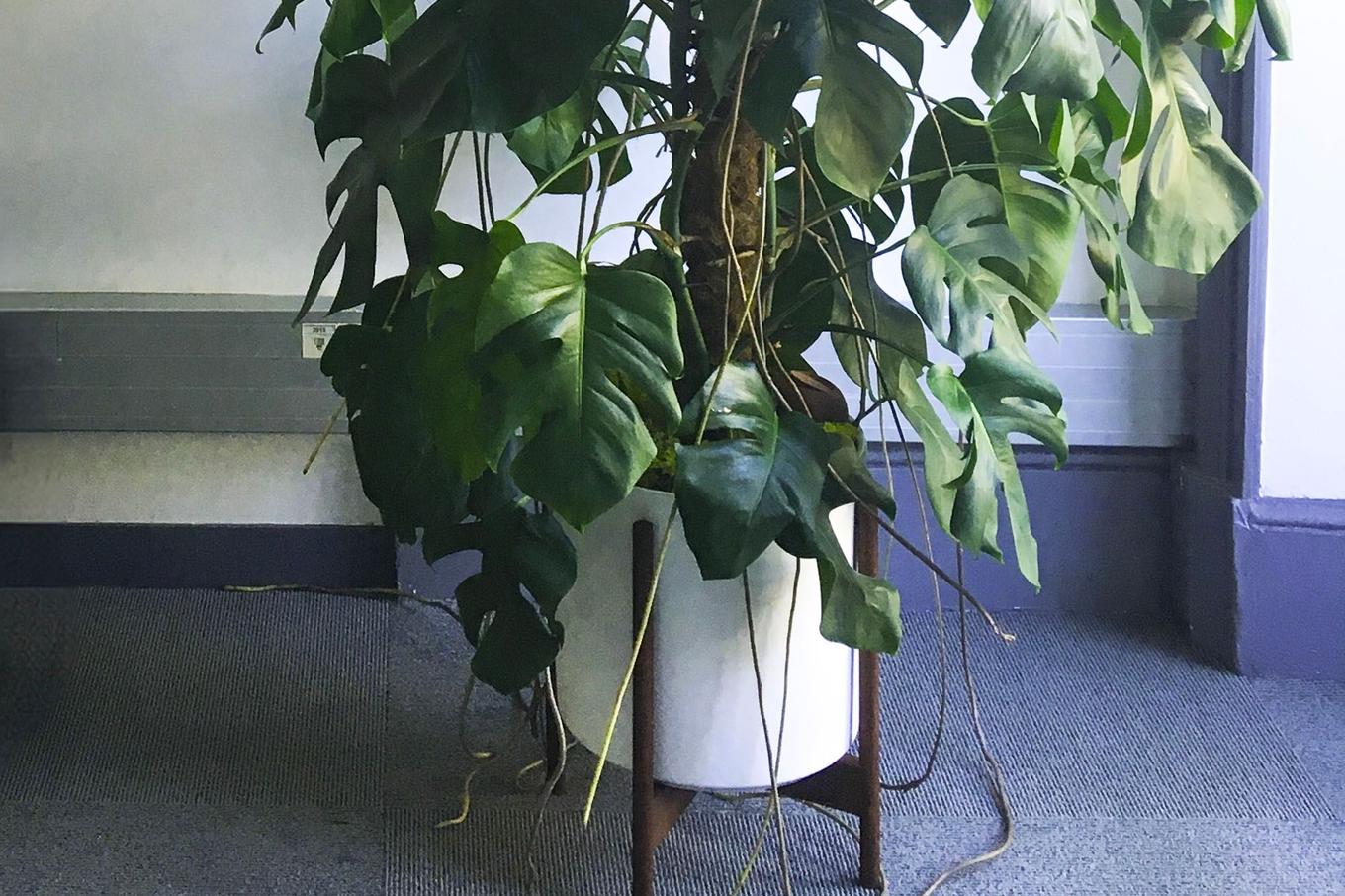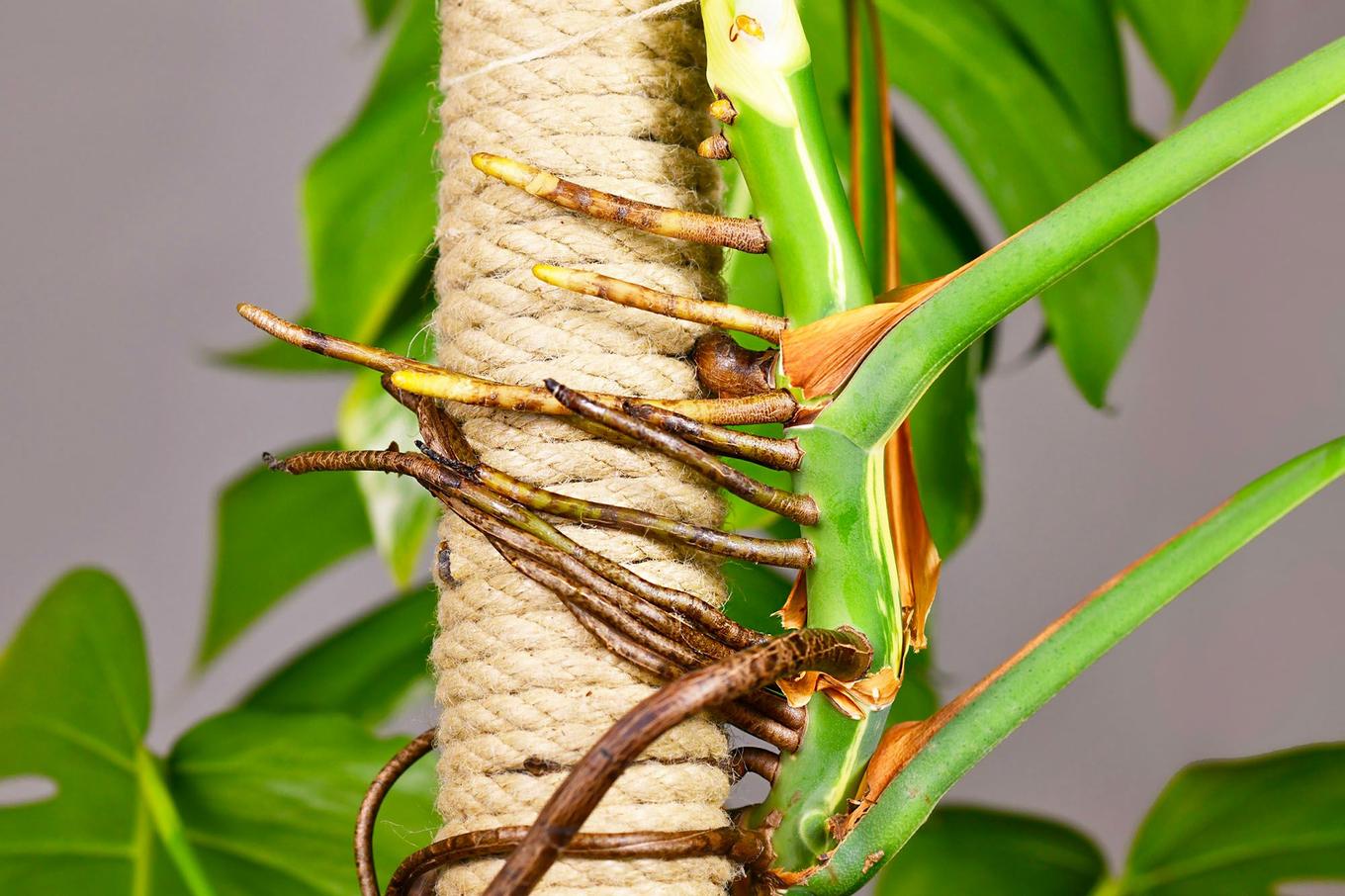5 things you need to know about the aerial roots of Monstera Deliciosa
Monstera Deliciosa, also known as the hole plant or false philodendron, is a houseplant prized for its large, perforated leaves, which add an exotic touch to our interiors. One of the most fascinating aspects of this plant is its aerial roots. But what are they really for, and how should you manage them?

What are aerial roots?
Aerial roots are roots that grow above the ground. In their natural habitat, the tropical forests of Central America, these roots enable Monstera to climb trees to reach sunlight while absorbing moisture and nutrients from the surrounding air.
What are they used for?
1. Structural support: They help stabilize the plant by clinging to surrounding supports.
2. Nutrient absorption: They capture moisture and nutrients from the air, helping to nourish the plant.
3. Environmental adaptation: They enable the plant to survive in nutrient-poor soil conditions.
Clean, shine and protect your Monstera
An indispensable complement to your Leon & George plants, L'Original is our ode to the tradition of olive oil soaps from the south of France. Entirely natural and composed of only four ingredients, L'Original acts as a natural shine for leaves, an insecticide and a fungicide for all living plants.
Should I keep the aerial roots?
It is generally recommended to keep the aerial roots of your Monstera Deliciosa. They contribute to the plant's overall health by improving its access to water and nutrients. What's more, they accentuate the plant's wild, natural character, adding a unique aesthetic dimension.
Can they be cut back?
If aerial roots become too invasive or unsightly, you can trim them back slightly. Here are a few tips:
1. Use clean tools: Make sure your shears or pruning shears are disinfected to prevent the spread of disease.
2. Don't cut too close to the stem: Leave a small gap to avoid damaging the plant.
3. Avoid frequent pruning: Excessive pruning can stress the plant.

How do you manage them if you want to keep them?
1. Direct them into the soil: You can guide the aerial roots into the potting soil. They will take root and strengthen the plant.
2. Use a stake: A stake covered with moss or rope mimics the Monstera's natural environment, allowing the roots to cling to it.
3. Maintain high humidity: Spray the roots regularly to keep them hydrated and encourage their development.
Conclusion
Monstera Deliciosa's aerial roots are an essential part of its structure and health. By understanding their role and knowing how to manage them, you can ensure vigorous growth and take full advantage of the exotic beauty of this exceptional plant.
Tips for a healthy Monstera Deliciosa
1. Indirect light: Place in a bright spot without direct sunlight.
2. Moderate watering: Water when the top of the soil is dry to the touch, avoiding excess water.
3. Regular fertilization: Apply a balanced fertilizer once a month during the growing season. If necessary, replace the top soil every 6 months to 1 year.
4. Repotting: Repot your plant every two to three years to give the roots more room.







